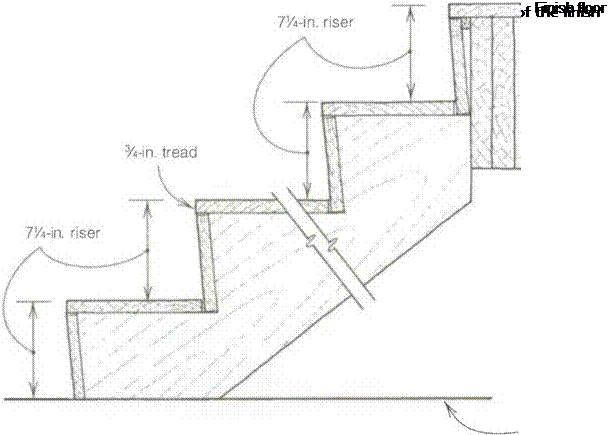Dropping the stringer
A simple adjustment often needs to be made at the bottom of the stringer to keep the first riser the same height as the rest, because if you nail а 3/нп. board to the first tread, for example, the step increases to 8 in. from JVa in. (see the drawing on the facing page). This is important for safety, because all risers need to be the same height. So subtract the thickness of the finish tread from the bottom of the stringer.
There are many different variations on this detail. If the subfloor is to be carpeted and treads sheathed with 3/ип.
 |
plywood and finished with 3/нп. hardwood, the stringer has to be dropped by 1Vi in. for every riser to be the same. If the stair is nailed to the subfloor and both treads and subfloor will be covered with 3/4-in. hardwood, nothing has to be done. If the subfloor is sheathed with 3/4-in. hardwood and treads with 3/нп. plywood and 3/s-in. hardwood, drop the stringers by 3/s in. Again, you need to know the exact thickness of the finish floor and tread material before you can frame the stairs.
To help secure the bottom of the stair, lay out a notch for a 2×4 on the bottom front of the first riser. Just take a scrap of 2×4, hold it flush with the outside
corner of the first riser, and scribe around it. This notch will rest on a 2x kicker that is secured to the floor (see the drawing on p. 157).






Leave a reply